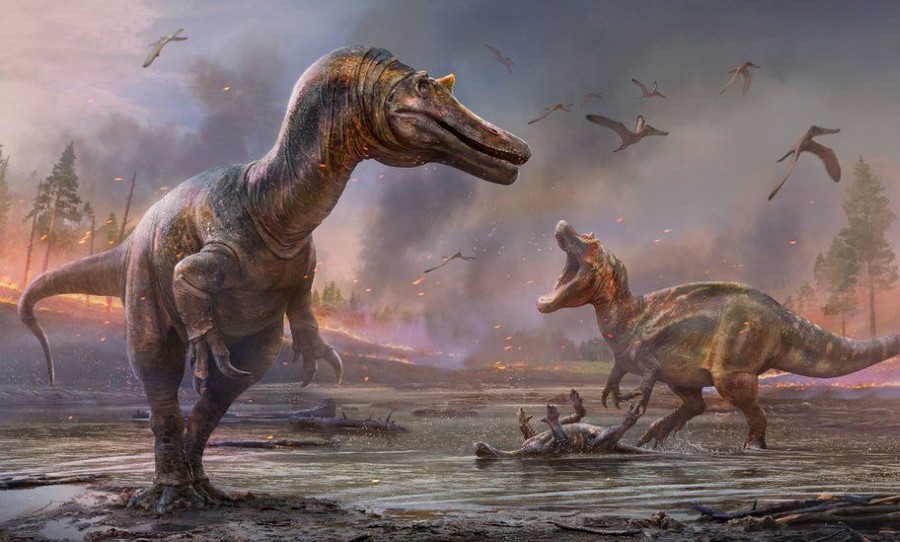Forget Tyrannosaurus Rex, the “Crocodile-Faced Hell Heron” is officially the most terrifying dinosaur to have lived.
The discovery of this frankly outrageous sounding dinosaur comes from the south coast of England, the Isle of Wight.
The two species, previously unknown to scientists, were identified after an analysis of over 50 bones collected on the aptly named Dinosaur Island.

The dinosaurs are spinosaurids, closely related to the very large and very scary predator Spinosaurus.
One of the two recent discoveries belongs to a species called ‘Ceratosuchops inferodios’ which translates to the aforementioned and the incredible cuddly sounding “horned crocodile-faced hell heron.” There is an educated assumption, derived from the fossilised remains, that the creature practiced ‘heron-like’ hunting techniques.
The second species is named ‘Riparovenator milnerae’, translating to ‘Milner’s riverbank hunter’.
‘Milner’ is an affectionate tribute to palaeontologist Dr Angela Milner, who studied the only other spinosaurid previously found in the UK. Passing away in August, Dr Milner is remembered for discovering the spinosaurid in a quarry in Surrey in 1983, naming it the Baryonyx walkeri.
'Horned crocodile-faced hell heron' dinosaur terrorized prey on land, in water https://t.co/XE3IWFnHjD
— CNET (@CNET) October 1, 2021
Chris Barker, lead author of the study identifying the two new species stated that, “We found the skulls to differ not only from Baryonyx, but also one another, suggesting the UK housed a greater diversity of spinosaurids than previously thought”.
Co-author Jeremy Lockwood, who discovered some of the bones, said that “we realised after the two snouts were found that this would be something rare and unusual. Then it just got more and more amazing as several collectors found and donated other parts of this enormous jigsaw to the museum.”
“This is the rarest and most exciting find I’ve made in over 30 years of fossil collecting,” added co-author and fossil collector Brian Foster.
Horned Crocodile-Faced Hell Heron is my favorite Iron Maiden album https://t.co/Jy4mCO0XzB
— Foster 🇺🇦 (@CadetFoster) September 30, 2021
Unearthed between 2012 and 2017, the remains were found in a deep and narrow ravine by the Isle of Wight’s southwest coast and date back 125 million years to the Early Cretaceous period. Thought to have been a floodplain during the spinosaurids’ lifetime, plenty of aquatic creatures would have inhabited the region giving them plenty of snacks to thrive on.



